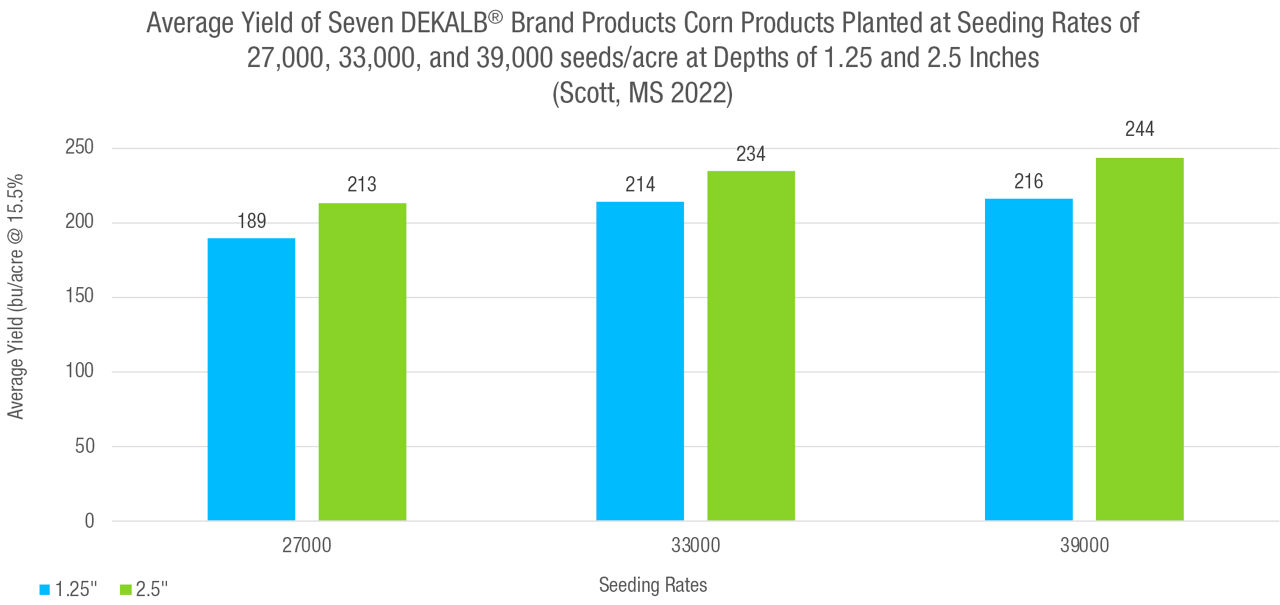Evaluations of Corn Planting Density and Planting Depth Across Seven DEKALB® Brand Products
January 29, 2023
Click on a tab below to see data collected each year for this study
TRIAL OBJECTIVE
- Product selection, seeding rate, and planting depth are important factors to help maximize corn yield potential. These factors can only be altered before or during planting; therefore, understanding their potential impact is central for the start of a new growing season.
- This study was conducted to evaluate the impact of product selection, seeding rate, and planting depth on corn yield potential.
RESEARCH SITE DETAILS

- Trial was planted on beds in 38-inch rows as a single replicate with each plot measuring 0.5 acres each.
- Nitrogen was surface applied at 275 lbs/acre as 28-0-0-5.
- DEKALB® corn products included (Table 1):
Table 1. DEKALB® corn products planted.

- Planting Depths
- 1.25 inches - shallow
- 2.5 inches - typical depth for southern corn
- Planting Rates (seeds/acre)
- 27,000
- 33,000
- 39,000
- Plots were harvested with commercial machinery and yields were corrected to 15.5% moisture content for reporting.
- All agronomic factors, weed, and insect control were per local standards.
UNDERSTANDING THE RESULTS
- This study reinforces previous Learning Center work at Scott, MS with the following points:
- The average yield response to deeper planting was higher when compared to shallower planting. In 2022, plots planted at the 2.5-inch depth gained an average of 24.15 bu/acre or $154.00/acre ($6.36/bu x 24.15 bu/acre) across seeding rates and DEKALB® products (Figure 1).
- It is possible that reductions in bird predation occurred with deeper planting; however, they were not directly measured.
- Responses to seeding rate, while product specific, resembled previous Learning Center observations in that yields generally increased as seeding rates increased (Figures 2 and 3).
- There was a trend for higher yields when seeds were planted at a depth of 2.5 inches deep (Figure 3).



KEY LEARNINGS
- Planting depth can only be established at planting; therefore, growers should be aware of factors influencing seeding depth. These factors can include field conditions, planter settings, and planting speed.
- Establishing correct planting depth can aid in developing optimal rooting mass/volume, aid in establishing uniform emergence and minimize bird predation.
- Proper decision making, planter maintenance/adjustment, and understanding the interaction of the factors involved can help growers when selecting corn products and determining seeding rates and planting depth before and/or during planting.
1214_70908